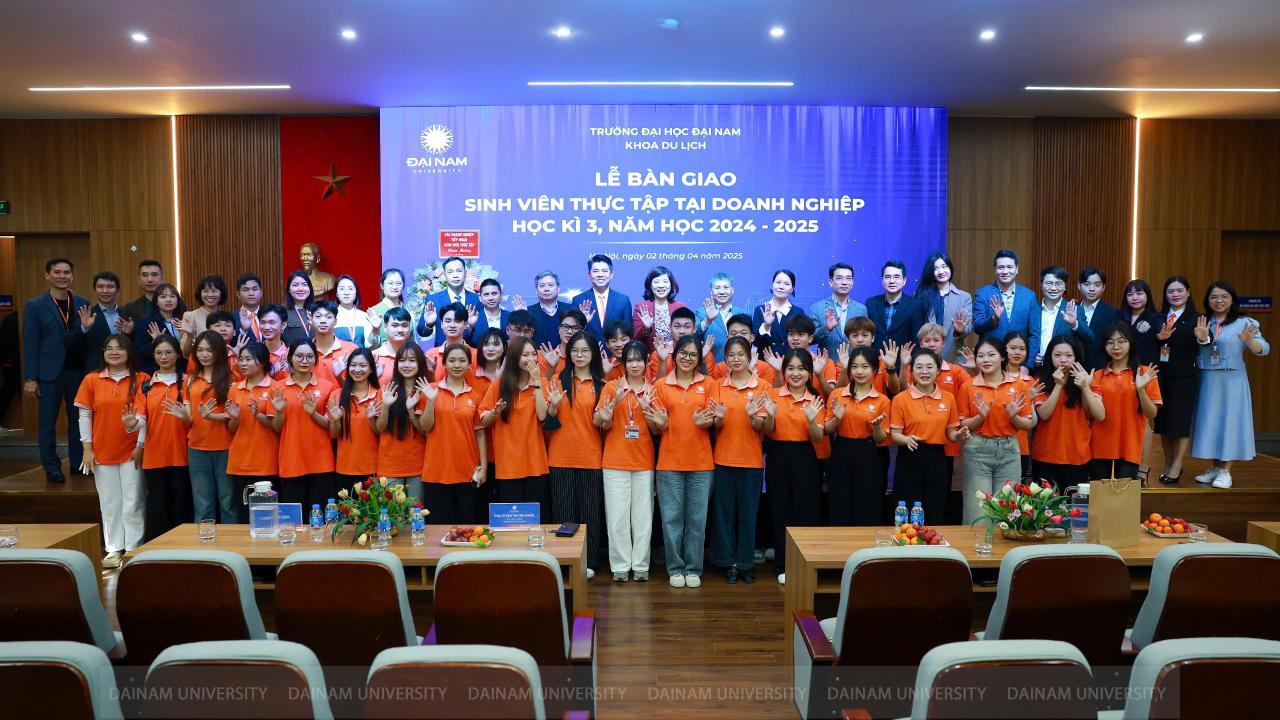Why should you choose a university that has been accredited according to new standards?

Achieving quality accreditation of educational institutions according to new standards is what every university and college wants to achieve. So, what is the purpose of quality accreditation of educational institutions? Why is it necessary to conduct quality accreditation of educational institutions according to new standards? The following article will help you answer these questions.
What is the purpose of educational institution quality assessment?
Educational quality assessment is a process of reviewing the quality of education from the outside, to survey and evaluate, thereby helping educational institutions improve and enhance the quality of education in a sustainable way . The educational quality assessment process is carried out in a 5-year cycle with 4 steps: Self-assessment; External assessment; Appraisal of assessment results; Recognition of meeting educational quality standards, thereby gradually meeting the goals set by the educational institution, ensuring the educational goals of the Law on Higher Education, in accordance with the requirements of training high-quality human resources to serve the socio-economic development of the country.
The process of self-assessment and evaluation of educational institutions must be based on the assessment standards for all activities of the educational institution, thereby continuously identifying strengths to continue promoting and shortcomings to develop a plan to overcome.
The main purpose of educational institution quality assessment is to ensure that certain standards are met in training and to continuously improve and enhance training quality, meet the requirements of human resource users and ensure the rights of learners. The criteria in quality assessment have created pressure for educational institutions to focus on, innovate and find solutions to improve quality. Educational institution quality assessment also aims to fulfill the responsibility of accountability to stakeholders (students, lecturers, staff, leadership and management teams, employers, partners, learners' families, investors, direct management agencies, state management agencies on education, other relevant organizations and individuals) on the status of education quality and operational efficiency of educational institutions.

A team of external assessment experts conducted a preliminary survey at Dai Nam University.
Quality assessment of higher education institutions according to new standards
On May 19, 2017, the Minister of Education and Training issued Circular No. 12/2017/TT-BGDDT regulating the quality assessment of higher education institutions according to 25 standards and 111 criteria replacing Decision No. 65/2007/QD-BGDDT dated November 1, 2007 of the Minister of Education and Training promulgating Regulations on standards for assessing the quality of university education.
The new set of accreditation standards is built based on the set of standards for assessing educational institutions issued by the ASEAN University Network (AUN-QA) in July 2016 (Guide to AUN-QA Assessment At Institutional Level (ver 2.0)), including 25 standards and 111 criteria, assessing the entire operation of a higher education institution, divided into 04 groups: Strategic quality assurance (08 standards, 37 criteria); Systemic quality assurance (04 standards, 19 criteria); Functional quality assurance (09 standards, 39 criteria); Performance results (04 standards, 16 criteria).
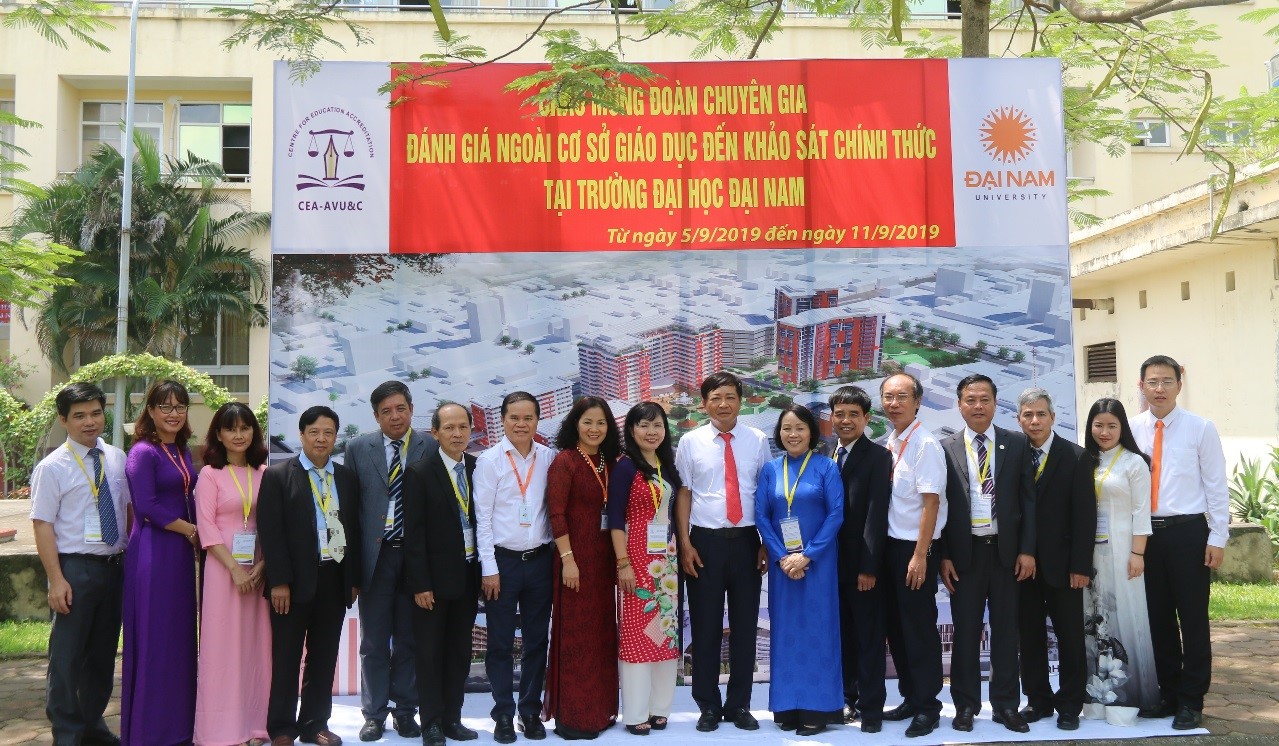
External evaluation team conducted an official survey at Dai Nam University.
Why test according to new standards?
Quality assessment standards are often periodically reviewed, revised and supplemented every 5-10 years. In Vietnam, the old set of university quality assessment standards has been in use for nearly 13 years and it has been nearly 7 years since the time of revision and supplementation.
According to experts, the old set of standards mainly focused on inputs and results, emphasizing the minimum standards as prescribed, with too many criteria tending to affirm the results achieved in the past or present.
These are in contrast to accreditation standards in developed countries around the world that mainly focus on processes and outcomes or outputs. For example, the standards of the Council for Higher Education Accreditation, USA - HLC emphasize the implementation of the mission and goals of higher education institutions; the criteria are qualitative and tend to encourage preparation for the future and quality improvement.
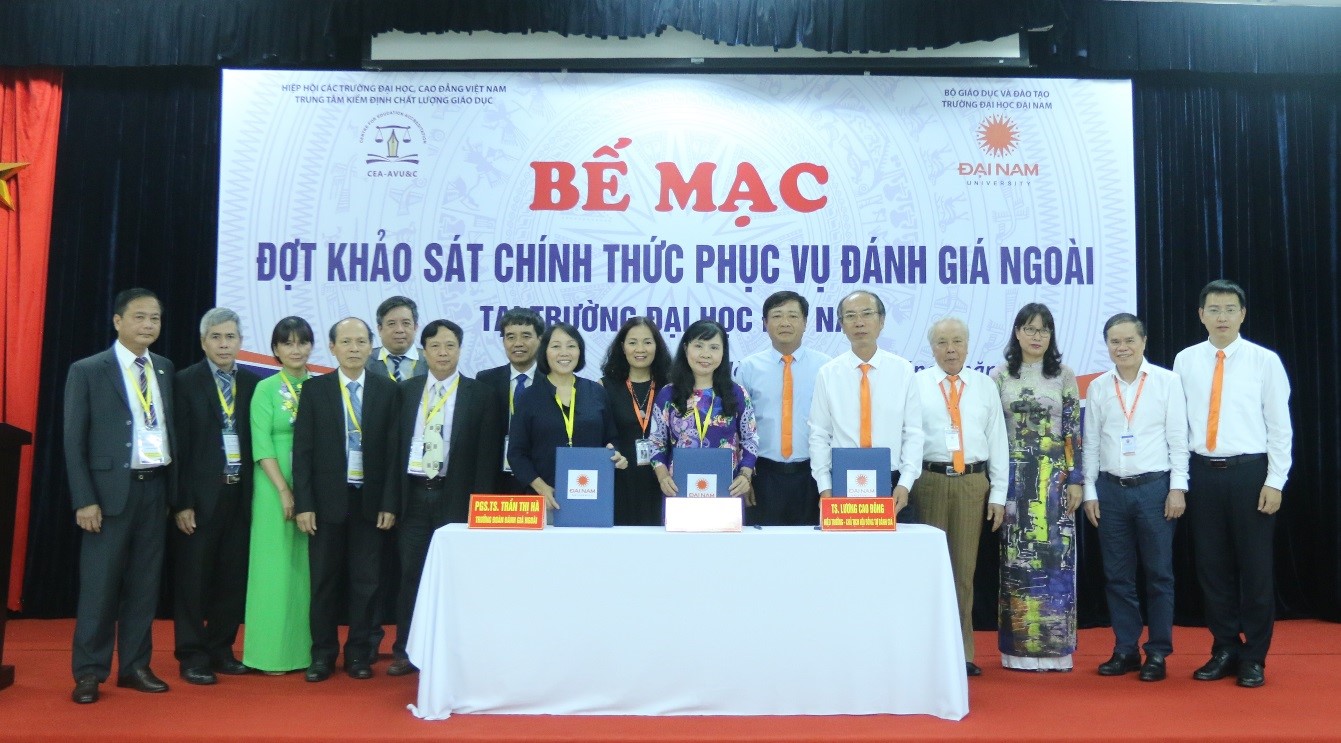
Dai Nam University and the External Evaluation Team signed the Official Survey Minutes.
The practice of implementing self-assessment and external assessment of universities has shown that some criteria of the current set of standards are unreasonable. Specifically, there are criteria that all schools meet. For example, the criteria on the activities of mass organizations in universities (criterion 4 of standard 2), the criteria on ensuring democratic rights of the management team, lecturers and staff (criterion 2 of standard 5), or the criteria on promoting ethics and lifestyle for learners (criterion 6 of standard 6).
On the contrary, there are criteria that very few schools meet. For example, the criterion on implementing recognition of learners' results (criterion 2 of standard 4), the criterion on ensuring revenue from scientific research and technology transfer (criterion 5 of standard 7), or the criterion requiring sufficient classroom space and dormitories for learners (criterion 5 of standard 9).
Quality assessment will not be meaningful for criteria that all schools meet or criteria that very few schools meet. The new set of standards has basically overcome the unreasonable points of the old set of standards.
The philosophy of the set of educational quality assessment standards issued under Circular No. 12/2017/TT-BGDDT is to ensure that all activities of educational institutions are carried out according to the Plan - Do - Check - Evaluate - Improve (PDCA) cycle. Through each cycle, the activities of educational institutions are continuously improved, changed, overcome shortcomings and increasingly perfected to meet the goals of the educational institution. Thus, each criterion in the new set of standards is an important link in a complete whole of the PDCA process, a process commonly applied in the work of ensuring the quality of higher education in the world.
Connectivity and consistency are also advantages of the new set of standards. The new set of standards with 25 standards and 111 criteria is essentially a concretization of 4 components in the AUN-QA educational institution assessment framework, including: strategic quality assurance (8 standards, 37 criteria), system quality assurance (4 standards, 19 criteria), functional quality assurance (9 standards, 39 criteria), and performance results (4 standards, 16 criteria).
Along with this new set of standards, the assessment and recognition of university quality standards has fundamentally changed compared to the old regulations. Each criterion will be assessed on a 7-level scale (corresponding to 7 points) instead of only 2 levels of achieved or not achieved as at present.
The 7-level assessment will be more detailed and accurate than the 2-level assessment. In addition, the multi-level assessment will help universities see more clearly the existing problems and weaknesses, thereby striving to improve the quality of education.
Dai Nam University - the 8th university to achieve educational quality accreditation according to the new set of standards
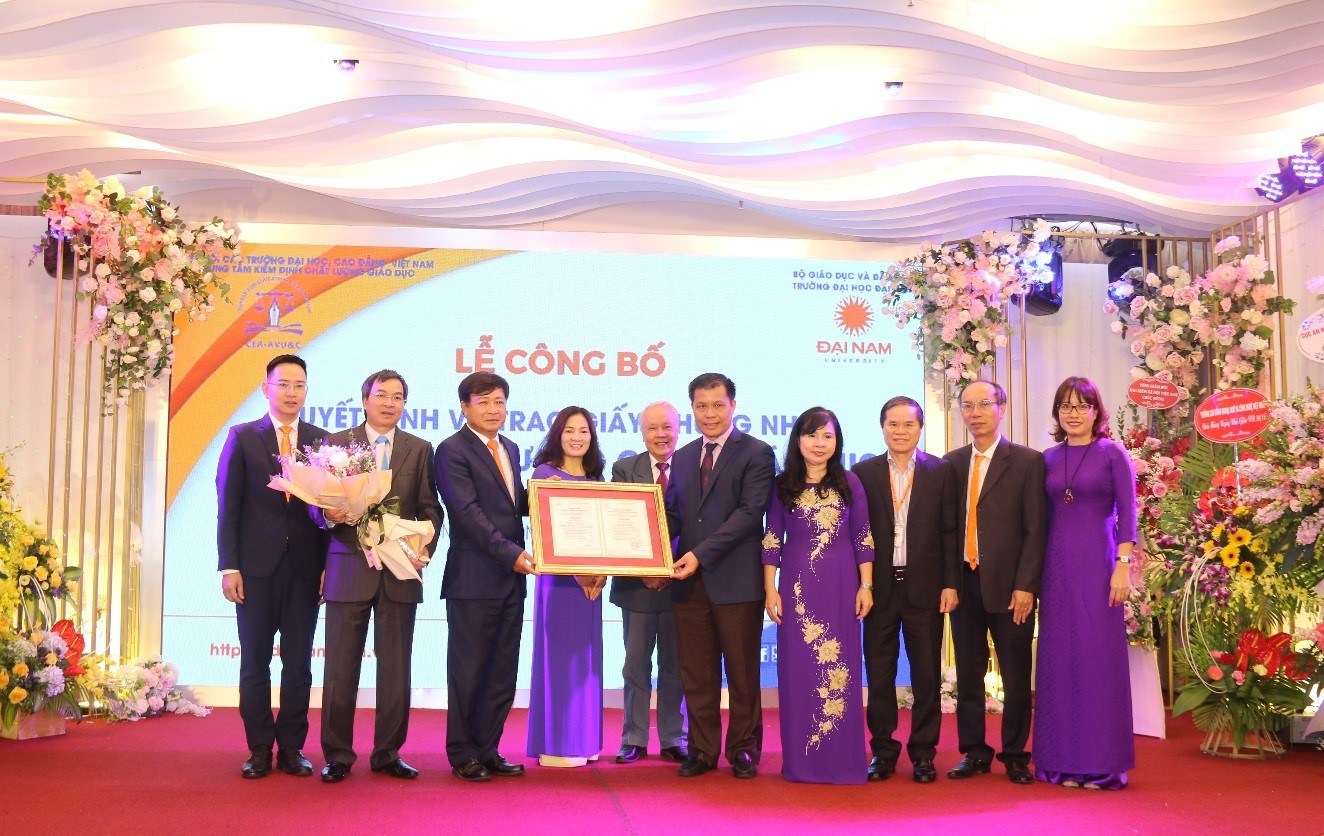
Representatives of the Ministry of Education and Training and the Center for Educational Quality Assessment awarded the Certificate of Educational Institution Quality Assessment to Dai Nam University.
Since its inception, Dai Nam University has advocated affirming its reputation and brand through the quality of training that combines learning with practice, linking training with reality and the human resource needs of society. In addition to gradually investing in facilities; building updated and modern training programs; selecting a team of excellent staff and lecturers; building a professional, modern and dynamic learning environment to help learners develop comprehensively, Dai Nam University pays special attention to quality assessment according to the Ministry of Education and Training's standards.
Accordingly, in 2016, Dai Nam University completed the Self-Assessment Report of educational institutions according to Decision No. 65/2007/QD-BGDDT and Circular No. 62/2012/TT-BGDDT of the Ministry of Education and Training. Pursuant to the Regulations on accreditation of higher education institutions issued on May 19, 2017 of the Ministry of Education and Training, Dai Nam University organized a self-assessment according to the new standards and in June 2019, the University completed the self-assessment report and submitted it to the Ministry of Education and Training and was allowed to sign an External Assessment Contract with the Center for Education Quality Assessment - Association of Vietnamese Universities and Colleges.
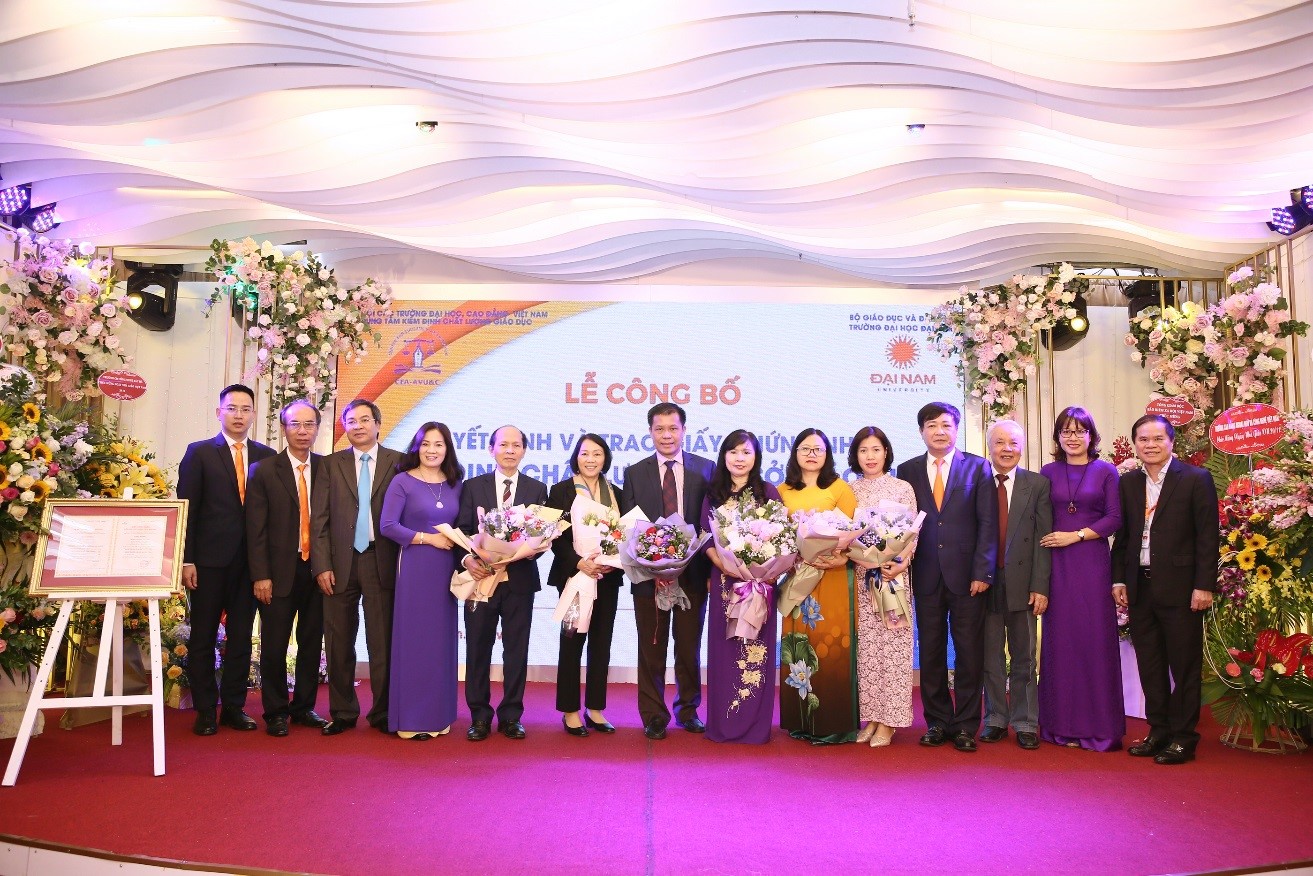
Representatives of the Ministry of Education and Training, representatives of the Center for Educational Institution Quality Assessment - Association of Vietnamese Universities and Colleges took souvenir photos with the Board of Directors and Board of Directors of Dai Nam University.
Through 02 surveys serving external assessment from August 3, 2019 to September 11, 2019 and through the assessment results appraisal council, on November 20, 2019, Dai Nam University officially became the 23rd non-public university recognized to meet educational quality standards and the 8th university recognized to meet educational quality standards according to the new set of standards of the Ministry of Education and Training.
Thu Hoe (synthesis)




